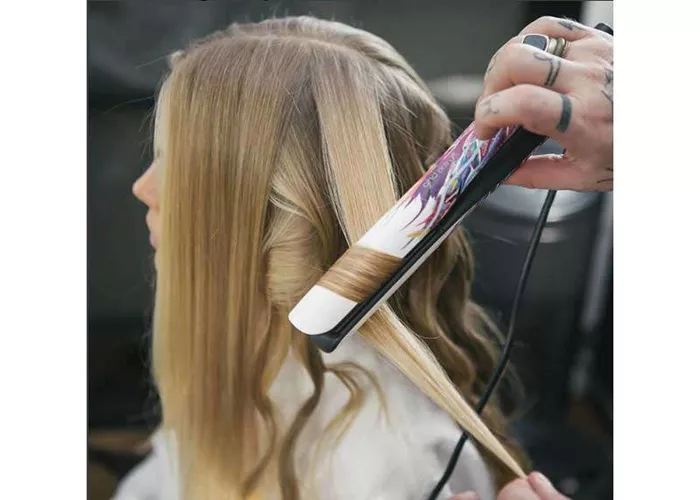Heat styling tools like flat irons, curling wands, and blow dryers are staples in many beauty routines. They help create sleek hairstyles, bouncy curls, or voluminous blowouts. However, frequent use of these tools can damage your hair over time. This is where heat protection comes in. In this article, we’ll break down everything you need to know about heat protection for hair, including how it works, why it’s essential, and how to use it effectively.
What Is Heat Protection?
Heat protection refers to products designed to shield your hair from damage caused by high temperatures. These products create a barrier between your hair and the heat styling tool, reducing the risk of dryness, breakage, and split ends. Heat protectants come in various forms, such as sprays, serums, creams, and oils. They are applied to hair before using hot tools to minimize harm while helping you achieve your desired style.
Think of heat protectants like sunscreen for your hair. Just as sunscreen protects your skin from UV rays, heat protectants guard your hair against thermal stress. Without this protection, repeated heat exposure can weaken your hair’s structure, leading to long-term damage.
How Does Heat Damage Hair?
To understand why heat protection matters, let’s explore how heat affects hair.
Hair Structure Basics
Each strand of hair has three layers:
Cuticle: The outer layer, made of overlapping cells (like roof shingles), protects the inner layers.
Cortex: The middle layer contains proteins (like keratin) and moisture, giving hair strength and elasticity.
Medulla: The innermost layer (not always present in fine hair).
When you apply heat, the cuticle lifts, exposing the cortex. High temperatures (above 300°F/150°C) can:
- Break protein bonds: Keratin proteins in the cortex weaken, making hair brittle.
- Remove moisture: Heat evaporates water from the cortex, leaving hair dry and prone to snapping.
- Melt the cuticle: Extreme heat can “fry” the cuticle, causing irreversible roughness and split ends.
Over time, damaged cuticles can’t seal properly, leading to frizz, dullness, and breakage.
Types of Heat Protectants
Heat protectants come in different formulas to suit various hair types and styling needs:
Sprays
Lightweight and easy to distribute, sprays are ideal for fine or thin hair. They often contain silicones or polymers that coat hair evenly.
Serums & Oils
Thicker formulas like serums or oils (e.g., argan oil) add shine and tame frizz. Best for thick, coarse, or curly hair.
Creams
Creams provide hydration and protection for dry or damaged hair. They’re great for blow-drying.
Leave-In Conditioners
Some leave-in conditioners include heat-protective ingredients, offering dual benefits of moisturizing and shielding.
Key Ingredients in Heat Protectants
Look for these ingredients when choosing a product:
- Silicones (e.g., Dimethicone): Form a smooth, heat-resistant barrier.
- Proteins (e.g., Keratin): Strengthen hair by reinforcing weakened bonds.
- Natural Oils (e.g., Coconut, Argan): Lock in moisture and add shine.
- Polymers: Create a protective film without weighing hair down.
- Glycerin: Attracts moisture to prevent dryness.
Avoid products with alcohol (listed as “ethanol” or “propanol”), as they can dry hair out.
How to Use Heat Protectants Correctly
Using heat protectant properly maximizes its benefits:
- Start with Clean, Damp Hair: Apply to towel-dried hair after washing.
- Section Hair: Divide hair into sections for even coverage.
- Follow Product Instructions: Some need to dry before styling; others work on damp hair.
- Use the Right Amount: A coin-sized amount for creams, 4-5 sprays for sprays.
- Adjust Heat Settings: Use the lowest effective temperature (fine hair: 300°F; thick hair: 380°F).
Common Mistakes to Avoid
- Skipping Sections: Missing spots leaves hair vulnerable.
- Using Too Much Product: Can make hair greasy or sticky.
- High Heat + Wet Hair: Never use hot tools on soaking-wet hair—it can cause bubbling damage.
- Ignoring Hair Type: Fine hair needs lightweight formulas; coarse hair needs richer serums.
Benefits of Heat Protection
- Reduces Breakage: Strengthens hair against heat stress.
- Preserves Color: Prevents fading from UV and heat exposure.
- Adds Shine: Smooths the cuticle for a glossy finish.
- Improves Styling: Helps tools glide easily, reducing frizz.
Choosing the Right Product
Consider:
- Hair Type: Fine, thick, curly, or color-treated.
- Tool Temperature: Higher heat requires stronger protection.
- Desired Finish: Matte, glossy, or voluminous.
DIY vs. Store-Bought Heat Protectants
While DIY options (e.g., coconut oil) offer some protection, they lack advanced heat-resistant polymers. Store-bought products are formulated to withstand higher temperatures without smoking or residue.
Conclusion
Heat protection is a non-negotiable step for anyone using hot tools. By understanding how heat damages hair and choosing the right products, you can enjoy styled hair without sacrificing its health. Remember: Less heat = less damage. Always prioritize your hair’s long-term vitality over short-term trends!
Related topics:
A Step-By-Step Guide to Making Your Own Heat Protection Spray
What to Use for Hair Heat Protection: Things You Need To Know
Can Hair Recover from Heat Damage?


